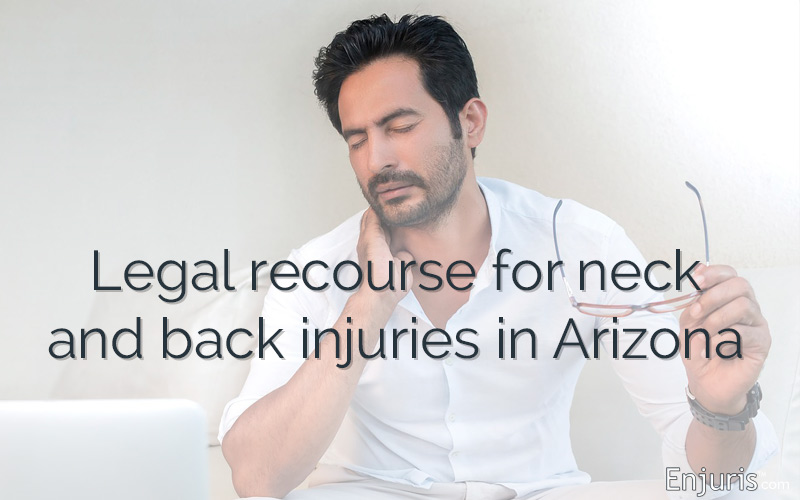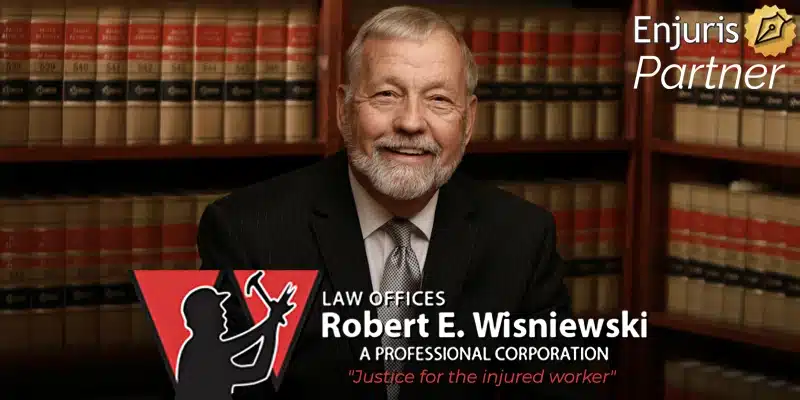
Learn the symptoms and when you can recover damages
According to the National Institute of Neurological Disorders and Stroke, 80% of adults experience back pain at some point in their lives. Neck pain also plagues a large portion of the population, as an estimated 20-70% of adults will experience neck pain serious enough to interfere with their daily activities.
Nevertheless, neck and back injuries are often taken less seriously by judges, juries, and insurance companies than other injuries. One reason for this is because neck and back pain can be subjective and difficult to prove. It’s important to keep detailed records following an accident that results in neck or back pain. It’s also a good idea to meet with an experienced attorney before filing a personal injury claim.

Printable daily medication log template helps you track your medicines and side effects
Download in PDF format
In this article, we’ll take a look at common neck and back injuries, who’s liable, and what damages might be available if you suffer a neck or back injury in Arizona.
Common neck or back injuries
The phrase “neck or back injury” is a broad term used to describe a number of different conditions that impact the neck or back. Neck or back pain can range from a mild ache to disabling pain. Common conditions include:
- Whiplash
- Spinal cord injury
- Sprains and strains
- Herniated disc
- Cervical dislocation
- Stingers and burners
- Muscle spasms
- Fractured disc or vertebrae
The long-term impact of these injuries can differ significantly. In general, the longer your injury persists despite receiving medical treatment, the greater the settlement or award.
Signs you suffered a neck or back injury
One of the trademarks of neck and back injuries is that other parts of your body tend to be impacted. This is due to the fact that your spinal column is your body’s main structural support.
Common symptoms of back pain include:
- Dull, burning, or sharp pain in your back or neck
- Leg numbness or tingling
- Stiffness along your spine
- Consistent ache in the middle or lower part of your back
- Loss of bladder or bowel control
Common symptoms of neck pain include:
- Weakness in both legs
- Arm numbness or tingling
- Headaches
- Shoulder pain
- Sharp shooting pains or dull aches in your neck
Pain that occurs suddenly in your neck or back following an accident is called “acute pain.” Acute pain comes on quickly and shouldn’t last more than 6 weeks. On the other hand, pain that lingers for 3 or more months is called “chronic pain.”
If you experience any of the symptoms above, it’s important to visit your healthcare provider. Your healthcare provider will perform a physical exam and may also take X-rays or MRI’s of the affected areas. In rare cases, a blood test might be necessary to diagnose arthritis—a condition that can cause back and neck pain.
Can I sue for this type of injury?
If you’ve suffered a neck or back injury, you may be able to recover damages. Your legal recourse depends on the nature of the injury.
Negligence lawsuit
If your neck or back injury is caused by another person or entity’s carelessness, you can attempt to recover damages by filing a negligence lawsuit.
In Arizona, you must prove 3 elements to establish negligence:
- The other person or entity owed you a duty of care
- The other person or entity breached that duty (in most cases, this means the person or entity failed to behave as a reasonable person would under the circumstances)
- You were injured and incurred damages as a result of the other person or entity’s breach
Most negligence cases involving neck and back injuries are the result of car accidents. But, negligence cases can also stem from:
- Pedestrian accidents
- Swimming pool accidents
- Defective products
- Medical malpractice
- Bicycling accidents
- Motorcycle accidents
Workers’ compensation claim
If you suffered a neck or back injury as a result of a workplace accident, you may be able to file a workers’ compensation claim.
Workers’ compensation is a form of insurance that pays medical expenses and lost wages to employees who are injured while doing their job.
Most injuries are covered so long as the injury occurred during the course of employment. Even if you already had a pre-existing neck or back injury and the work-related accident merely aggravated the injury, you’re still eligible to receive workers’ compensation benefits.
Intentional tort
In rare cases, someone may have intentionally caused your neck or back pain. For example, you may have been mugged and assaulted. This is called an “intentional tort,” and—in addition to the usual damages available in negligence cases—you may be able to recover punitive damages.
What damages can be recovered?
In a personal injury case, you’re entitled to compensation from the person or entity legally responsible for your injuries. The legal term for this compensation is “damages.”
In Arizona, there are three basic types of damages available in a personal injury lawsuit:
- Economic damages (sometimes called “special damages”)
- Non-economic damages (sometimes called “general damages”)
- Punitive damages
Let’s take a closer look at each of these.
Economic damages are intended to compensate you for the monetary losses associated with your neck or back injury. These losses might include:
- Medical expenses
- Lost income due to missing work
- Any other out-of-pocket expenses you incurred due to your injury
Non-economic damages are designed to compensate you for the non-monetary consequences of your injury. For example, the subjective pain and suffering that you experience as a result of your accident. General damages vary from case to case, but common examples include:
- Physical pain and suffering
- Emotional distress
- Loss of consortium
Punitive damages are generally not awarded in personal injury cases. In Arizona, punitive damages are only available if the defendant’s conduct was:
- Grossly negligent: conduct that is extreme or reckless as opposed to careless or unreasonable, or
- Willful and wanton: conduct that is intended to cause harm (such as the intentional tort described above).
Keep in mind that neck and back pain often lead to further complications and damages may also be available for these complications. According to Johns Hopkins Medicine, 4 of the most common complications include:
- Loss of productivity. Back pain is the most common cause of disability in working adults.
- Nerve damage. If your back pain is from a herniated disc, pressure on the spinal nerves can cause a variety of problems, including weakness, numbness, or severe shooting pain that travels from the back to the leg.
- Depression. Back or neck pain may limit work, exercise, social activities, and sleep. All of this can lead to depression.
- Weight gain. The loss of mobility associated with neck or back pain can result in weight gain and the loss of muscle strength.

Sample accident journal/diary to help you document the effect on your daily life
Download in PDF format
What if I’m partially at fault?
Arizona follows the pure comparative fault theory. Under this theory, the amount of damages a plaintiff can recover is reduced by a percentage that reflects their own degree of fault – no matter what that percentage may be.
Neck and back injury resources
Neck and back injuries can impact every aspect of your life. Don’t hesitate to reach out for help using the following resources:
- Arizona Spinal Cord Injury Association
- United Spinal Association: Tucson Support Group
- VOICE Arizona
- Arizona Pain Specialists Support Group
After you’ve sought proper medical treatment for your injuries, contact an attorney to find out if and how you may receive compensation for suffering a back or neck injury.
See our guide Choosing a personal injury attorney.

